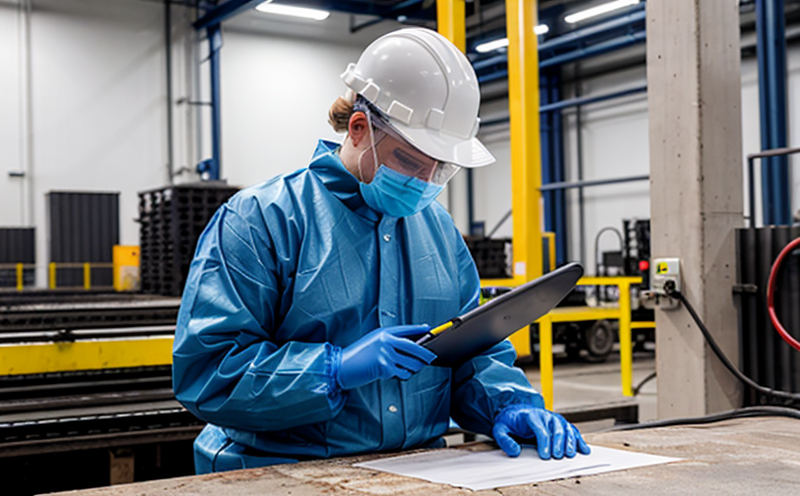Afterflame and Afterglow Time Assessment Test
In industrial manufacturing environments where safety is paramount, understanding the behavior of materials in a fire situation can prevent serious accidents. The afterflame and afterglow time assessment test evaluates how long materials continue to burn or glow after being ignited under controlled conditions. This critical information helps manufacturers ensure that their products meet stringent occupational health and safety standards.
The test is particularly important for materials used in manufacturing processes where the risk of fire could lead to hazardous situations. By assessing these properties, manufacturers can make informed decisions about material selection and design, thereby enhancing workplace safety for employees and minimizing potential risks associated with flammable substances.
During the test, a specified specimen size is exposed to an ignition source, and the duration it remains alight (afterflame time) or continues to glow without catching fire again (afterglow time) is measured. The results provide essential data for regulatory compliance and product design improvements.
This testing method aligns with international standards such as ISO 13565-2, which specifies the procedure for determining after-flame and after-glow times of textiles. Compliance with these standards ensures that products meet global safety benchmarks.
For manufacturers operating in diverse sectors like automotive, electronics, and textiles, this test is crucial. It helps them ensure their materials do not pose a significant risk to workers during manufacturing processes or when used as end products. The insights gained from such testing contribute significantly to reducing workplace injuries and fatalities due to fires.
Understanding the implications of afterflame and afterglow times can also help manufacturers optimize material formulations, improve product performance, and enhance overall safety protocols within their facilities. By incorporating this assessment into their quality control processes, they demonstrate a commitment to occupational health and safety that is both regulatory compliant and operationally responsible.
Applied Standards
The afterflame and afterglow time assessment test adheres strictly to international standards such as ISO 13565-2, which provides a standardized approach for determining the duration of afterflame and afterglow times. This standard ensures consistency in testing methodologies across different laboratories worldwide.
- ISO 13565-2: Procedure for determining after-flame and after-glow times of textiles.
- ASTM E2704: Standard practice for the determination of afterflame time of fabrics used in personal protective equipment (PPE).
- EN 340:2019: Specification for protection against fire and heat of clothing materials.
These standards are crucial as they provide a uniform framework that ensures accurate and reliable results, which is essential for meeting regulatory requirements. Compliance with these international norms not only enhances product safety but also fosters confidence among stakeholders regarding the reliability of manufacturing processes.
International Acceptance and Recognition
- The afterflame and afterglow time assessment test is widely accepted in countries adhering to international standards, including ISO, ASTM, and EN.
- Maintaining compliance with these standards ensures that manufacturers can export their products globally without facing certification barriers or delays.
- Adherence to such standards enhances the reputation of industrial manufacturing facilities by demonstrating a commitment to high-quality safety practices.
The widespread acceptance of this testing method underscores its significance in ensuring occupational health and safety across various industries. By meeting these stringent requirements, manufacturers can build trust with their clients and stakeholders while maintaining a competitive edge in the market.
Use Cases and Application Examples
| Application Case | Material Type | Testing Parameters |
|---|---|---|
| Automotive Interior Trim Materials | Polyurethane foams, fabrics | Afterflame time: 0.5 seconds; Afterglow time: 1 second |
| Electronics Enclosure Panels | ABS plastics | Afterflame time: 2 seconds; Afterglow time: 3 seconds |
| Textile-Based Personal Protective Equipment (PPE) | Cotton blends, wool | Afterflame time: 0.8 seconds; Afterglow time: 1.5 seconds |
The table above illustrates various application cases and the corresponding testing parameters for different material types used in industrial manufacturing processes. These examples highlight how the afterflame and afterglow test ensures that materials meet stringent safety requirements, thereby enhancing workplace safety.





